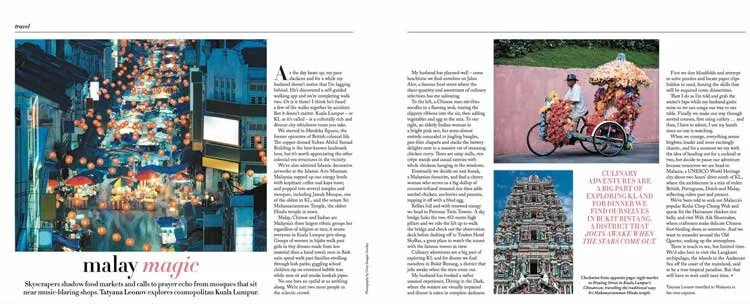View from the Top
Climbing the lush hills around Santiago is an essential part of a visit to South America’s funkiest new tourist hub, writes Tatyana Leonov.
During our descent to Chile’s capital, I clamp my forehead against the plane’s window and gaze out. The magnificent Andes pop into view: hulking snow-dusted peaks flanking a smattering of glimmering skyscrapers. “We will land in Santiago shortly,” drifts the pilot’s voice through the cabin.
As cities go, Santiago holds claim to one of the most impressive backdrops in the world. It’s also one of Latin America’s most relaxed cities. The locals are friendly, it’s easy to get around thanks to modern infrastructure, the arts scene is buzzing and there are plenty of picturesque plazas and verdant green spaces for leisurely strolls or romantic rendezvous.
Not so long ago travellers used Santiago as a gateway to Patagonia and Easter Island, but in recent years this Latin city has turned the spotlight on its history and culture – and, in turn, started its own tourist boom.
Having arrived on a crystal clear day, I make the most of the weather and start with the main sights. Cerro Santa Lucía is a lush reserve sprawled over a small hill rising above the city centre. The gardens feature monuments, old buildings and a labyrinth of elaborate stone paths and steep stairs leading to the summit. It’s a rewarding climb that passes old churches, beautiful brick terraces and pretty fountains.
The payoff, of course, is a spectacular view over the city. Interestingly, one of the first recorded uses for the hill was as a lookout. In 1541 the hill was captured by Spanish conquistador Pedro de Valdivia and in the following years was used as a reconnaissance post.
Hungry for more panoramas, I visit Santiago’s largest park, Cerro San Cristóbal, which rises 300 metres above the city and features an imposing statue of the Virgin Mary at its peak. The park is also home to botanical gardens, a zoo and plenty of biking and hiking trails, but the summit is the highlight. I have a spare couple of hours, so opt to walk up instead of taking the funicular.
The track is swarming with nature lovers and it’s easy to make friends with other hikers en route. As we repeatedly pass each other we begin to natter. Daniel hails from Santiago’s outskirts and has travelled by bus to do the trek. Lucia used to live in Santiago but now resides in Patagonia; she is here to see her parents. Recent retirees Bob and Betty hail from Louisiana and have just begun a two-month South American adventure. We share stories: I attempt to practise my Spanish, the Chileans practise their English.
At the top, the view is astounding. The Andes poke up like crooked teeth; slate-coloured clouds dash across the sky. The late afternoon begins to transform into an escalating succession of fiery oranges and flaming pinks. I sit and watch the spectacle with my new friends, sipping a mote con huesillo, a traditional Chilean dessert-drink made from barley, stewed peaches and syrup.
Chilean people may come across as a little shy initially but if you dig deeper you’ll find yourself quickly making friends – or at least chatting to residents keen to share their story with you.
The best place to meet the locals is by exploring Santiago’s diverse neighbourhoods. The city is made up of different barrios. Many are home to leafy parks and tree-lined boulevards; some boast thriving arts scenes; others centre on cafe culture; there are plenty of foodie finds; several are nightlife hot spots. For tasty seafood served in thrumming surrounds, the city centre’s Mercado Central is a must. I feast on caldillo de congrio here, a famous Chilean fish stew, before heading off to explore Barrio Lastarria and Barrio Bellas Artes – central hubs for the arts scene. Museo de Artes Visuales is a modern art extravaganza, while Museo Nacional de Bellas Artes is home to an impressive permanent collection of Chilean fine art.
Santiago is a night-time city, too, with a cocktail of entertainment venues to whet anyone’s appetite. There are hidden-away jazz joints and laid-back cafes that come alive when the sun goes down, while you will need to book well ahead for the buzzy nightclubs and flashy restaurants. In Barrio Lastarria, Barrio Brasil or Barrio Bellavista, find a coveted seat at a bar, order a Chilean red and sit back and watch the style-setters of Santiago revel deep into the night.
The next day, you can discover Santiago’s unusual café con piernas (“coffee with legs”) cafes, where waitresses rocking high heels and minuscule skirts bring customers their coffees. The origin of these coffee spots date back, allegedly, to the 1980s when the Chilean population needed a distraction from the suffering sustained under the oppressive dictatorship of Augusto Pinochet and a series of economic crises.
Caffeinated and alert, I head to Plaza de Armas, a charming square fringed with neo-Renaissance government buildings. Founded in 1541 by conquistador Pedro de Valdivia, the original centre of Santiago still acts as a key meeting place for residents.
On the eastern side of the plaza, I watch a bunch of seniors play chess as three musicians pump out folk tunes to a growing audience. A small crowd gathers to watch two skateboarders perform tricks in front of the majestic, colonial-era Catedral Metropolitana. Kids drop ice-creams. Mums buy them new ones. Dads film the commotion trying not to laugh. I sit back and take it all in, knowing that although I have to jet off soon, I’ll definitely be back.





